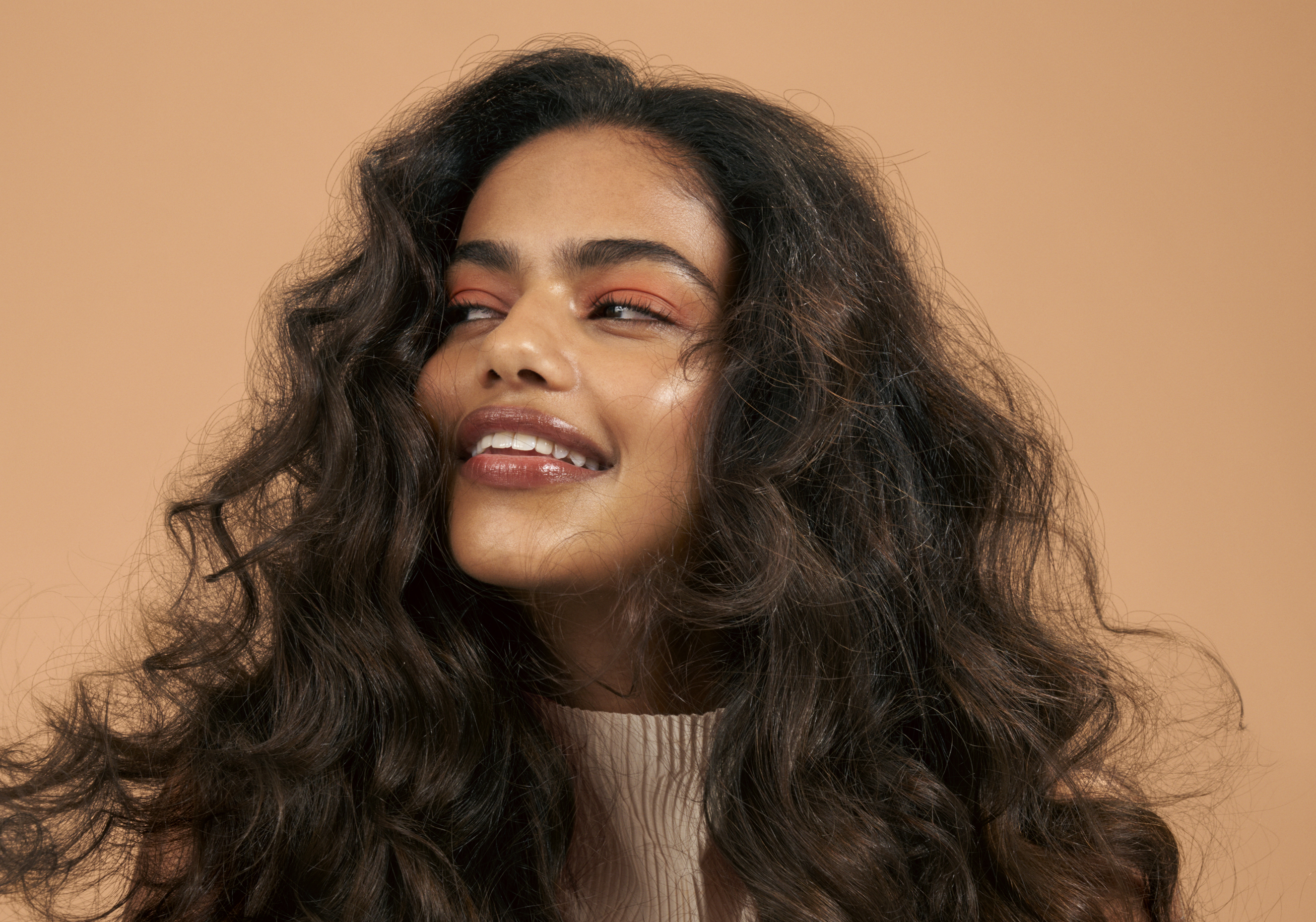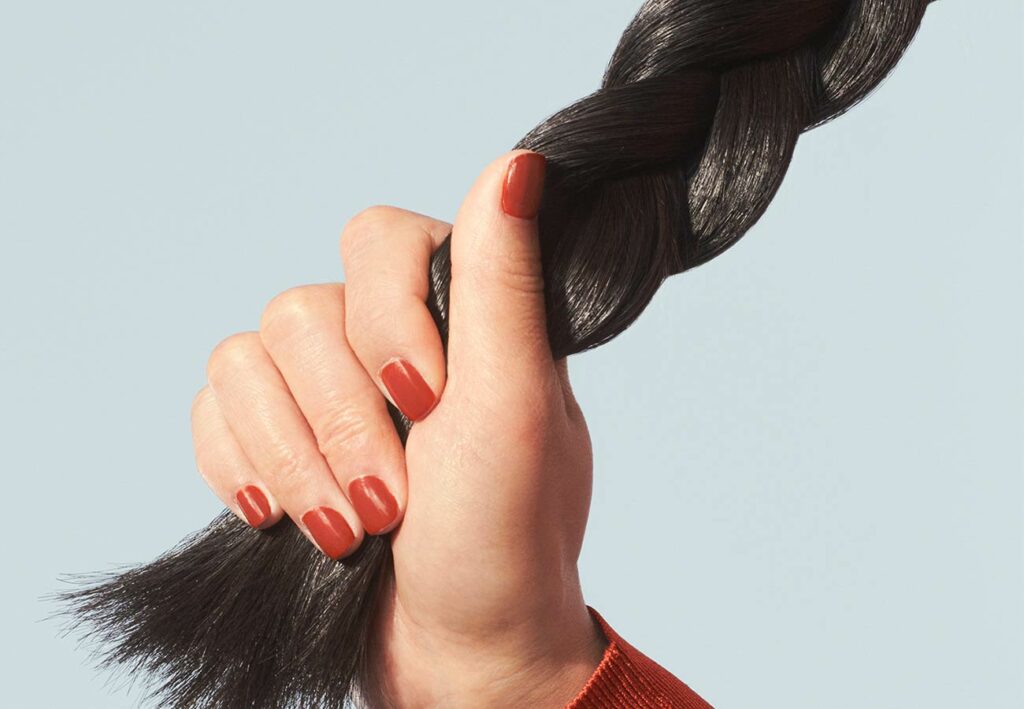Strengthen in the shower
Heat styling on the regular can sizzle the hair’s outer layer, known as the cuticle, making it more apt to lose moisture, become brittle, and break. That’s why it’s important to reinforce weakened strands by using shampoo and conditioner laced with protein (sometimes called keratin) to help fill in gaps in the cuticle layer and make hair less apt to tear and split. At Prose, we have several ingredients that do exactly this: our silk proteins nourish a damaged cuticle layer; while our heat shield cocktail contains both wheat and soy amino acids (a.k.a. proteins) to make strands stronger and more resilient.
Make time to mask
Boosting the protein in your regular shampoo and conditioner is vital, but, to maximize strengthening results, try to take the time once a week to apply a deep treatment. (Most only take ten minutes!) In addition to an essential protein boost, many Prose custom pre-shampoo masks also contain hydrating ingredients such as argan and jojoba oils to replenish any moisture lost via leaky (heat-compromised) cuticles. To improve penetration, apply the mask while you’re in a steamy shower or bath, as heat will help with absorption.
Go easy on your hair
Have you ever tugged at your hair with a round brush while blow-drying—or yanked a flat iron through frizzy strands to maximize smoothness? You’re not alone; heat styling can be pretty tough on tresses. Therefore, it’s important to be kinder in all other styling tasks: When detangling, start with the ends of your hair using a wide-toothed comb, then slowly, carefully work up to your roots, and when towel drying, gently squeeze, never rub.
Load up on a heat-protectant styler
In addition to using a protective shampoo and conditioner infused with the protein-rich heat shield complex, you should also spray on a heat-protectant styling product for extra safe-guarding before blow-drying or ironing. “I tell my clients to think of a heat-protectant product as they would SPF. Apply generously and thoroughly and make sure your strands are fully and evenly coated,” says Nina Dimachki, a stylist in Northville, Michigan. Dimachki also says most heat protectants work best on hair that is at least 50 percent dry (so squeeze dry with a towel or leave wet tresses in a towel turban for ten to fifteen minutes). “Continuing with the SPF analogy, a heat protectant, like SPF, is best absorbed and won’t be diluted, when applied to dryer hair,” explains Dimachki.
Pro Tip: Did you know that our leave-in conditioner protects your hair up to 450 degrees Fahrenheit?
Never blow-dry sopping-wet hair
“Before you begin blow-drying, get the hair as close to 80 percent dry as possible,” says Dimachki, who suggests leaving your hair in towel turban or air drying for up to twenty minutes. Of course this depends on your hair type, but if possible, don’t immediately reach for the round brush and “rough dry” first, using your fingers and the blow-dryer on a medium-heat setting to remove most of the remaining water. Finally, get out your brush and turn up the blow-dryer heat to shape and smooth as your last step. “At this point, you can further minimize damage by direct the blow-dryer nozzle down the hair shaft, toward the ends,” says Dimachki. “This cuts down on direct heat applied to the hair, as well as seals the cuticle shut to prevent frizz and boost shine.”
Adjust the temperature
Not all hair types need to be smoothed or curled with an iron cranked up to 450 degrees. In fact, most don’t. It’s probably worth it to invest in a heat styling tool that allows you to turn down the temperature as needed. Most hair (fine to medium, colored or curly) can be easily styled using 300 to 380 degrees, while even the thickest, coarsest hair can typically be straightened or curled using about 400-degrees. One caveat: “The temperature you choose should enable your hair to be smoothed in one pass with a flat iron or one spin with a curling iron. If you’ve turned the temperature dial down so much that you need to run an iron over each section three or four times to get it smooth, then that’s just as damaging,” says Dimachki. Your goal: Find the lowest temperature that still allows you to get your styling done efficiently.
Be picky about your plates
“When it comes to flat or curling irons, you want to choose models that use ceramic, porcelain or tourmaline in their plates or barrels because they conduct heat evenly,” says Dimachki. “Tools that don’t use these materials tend to suffer heat surges while you’re styling, and this can sizzle the hair,” she explains.






